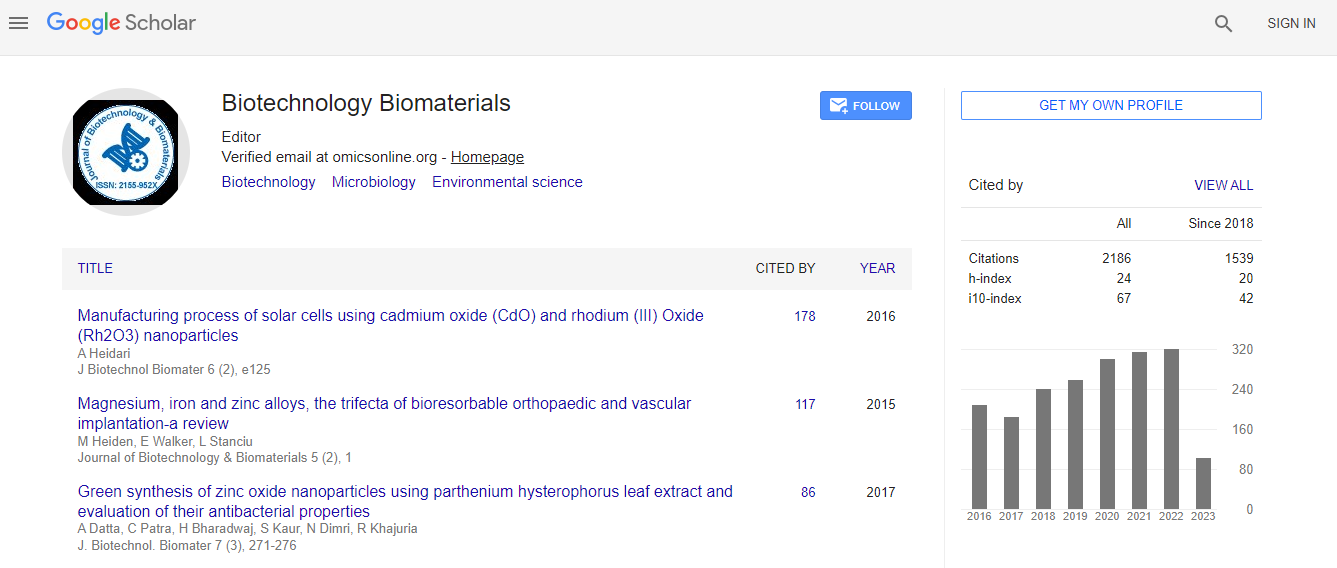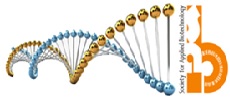Our Group organises 3000+ Global Conferenceseries Events every year across USA, Europe & Asia with support from 1000 more scientific Societies and Publishes 700+ Open Access Journals which contains over 50000 eminent personalities, reputed scientists as editorial board members.
Open Access Journals gaining more Readers and Citations
700 Journals and 15,000,000 Readers Each Journal is getting 25,000+ Readers
Google Scholar citation report
Citations : 3330
Journal of Biotechnology & Biomaterials received 3330 citations as per Google Scholar report
Indexed In
- Index Copernicus
- Google Scholar
- Sherpa Romeo
- Open J Gate
- Genamics JournalSeek
- Academic Keys
- ResearchBible
- China National Knowledge Infrastructure (CNKI)
- Access to Global Online Research in Agriculture (AGORA)
- Electronic Journals Library
- RefSeek
- Hamdard University
- EBSCO A-Z
- OCLC- WorldCat
- SWB online catalog
- Virtual Library of Biology (vifabio)
- Publons
- Geneva Foundation for Medical Education and Research
- Euro Pub
- ICMJE
Useful Links
Recommended Journals
Related Subjects
Share This Page
Optimization of biomass and lipid production from a local Chlorella isolates using response surface methodology and artificial neural network
13th Biotechnology Congress
Zanenhlanhla Gumbi
University of KwaZulu Natal, South Africa
ScientificTracks Abstracts: J Biotechnol Biomater
Abstract
The exhaustion of the world��?s fossil fuel supplies and global warming are driving the search for renewable sources of fuel. Microalgae have received great interest as an alternative to fossil fuels due to their fast growth rates and high photosynthetic efficiencies. This study focuses on the optimization of biomass and lipid yield from an indigenous Chlorella isolate using the Response Surface Method. The input parameters consisted of NaNO3, NaHCO3 and NaCl within the ranges of 0.05-2.0 g/l, 0.5-3.0 g/l and 0-10 mM respectively. Data from 17 experiments with varied culture conditions was used to develop a polynomial model. Analysis of variance (ANOVA) of the model gave a coefficient of determination (R2) of 0.72. The predicted optimum conditions for biomass formation were 1.55 g/l NaNO3, 3.0 NaHCO3 and 0 mM NaCl. The response graphs showing the interaction of NaHCO3 and NaNO3 on algal growth revealed that an increase in NaNO3 and NaHCO3 medium concentration enhanced the biomass formation whereas NaCl did not impact on biomass formation. These findings revealed that under optimal conditions the indigenous Chlorella isolate could be a potential strain for high biomass formation required for biodiesel production.Biography
Zanenhlanhla Gumbi has completed her Bachelor of Science degree at the University of KwaZulu Natal and is currently pursuing MSc at the same institution. She is a Member of the Golden Key Honors Society and her key research interests lie in the fields of microalgal biotechnology and renewable energy.
Email: zanenhlanhlagumbi@gmail.com

 Spanish
Spanish  Chinese
Chinese  Russian
Russian  German
German  French
French  Japanese
Japanese  Portuguese
Portuguese  Hindi
Hindi 
